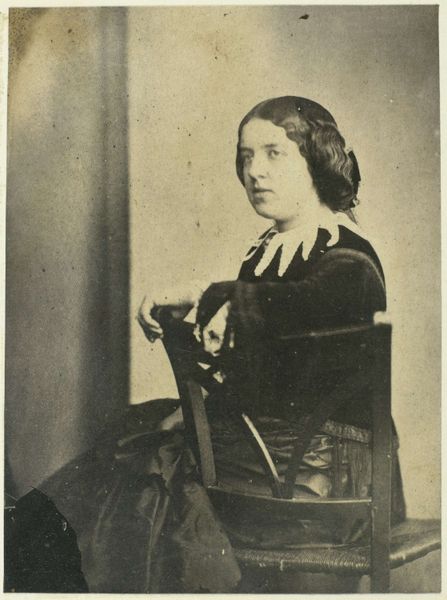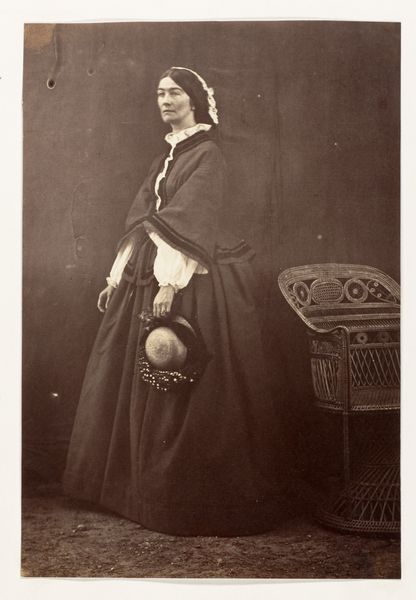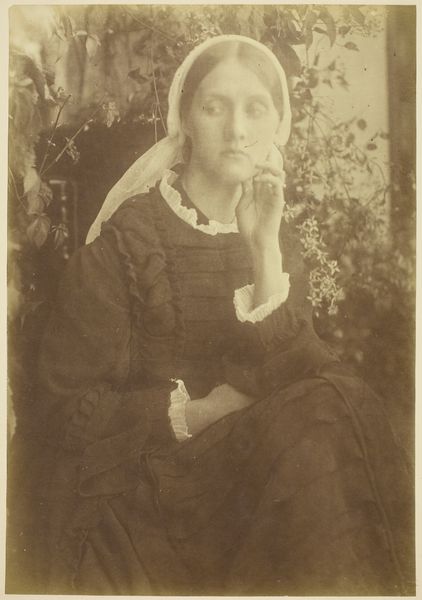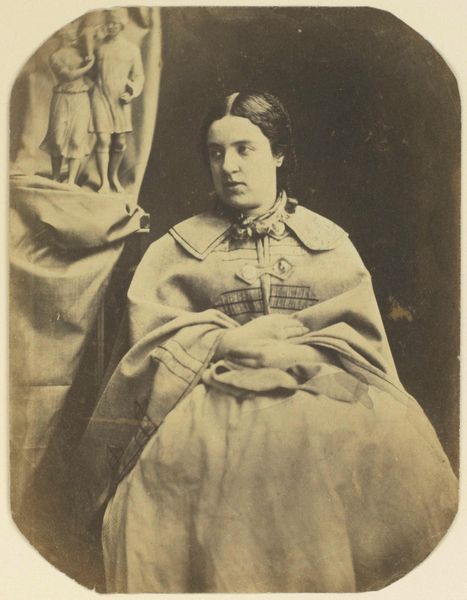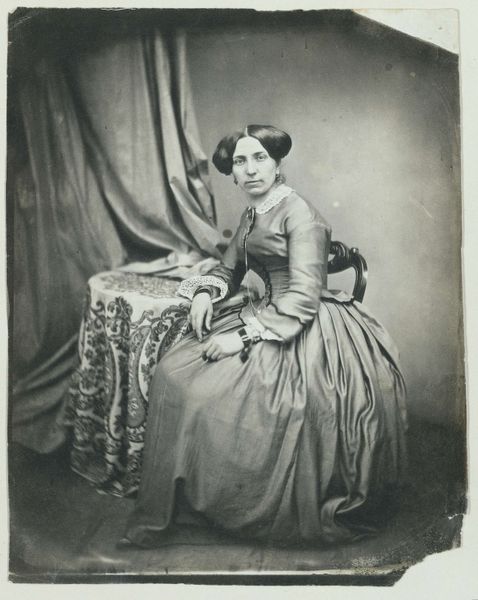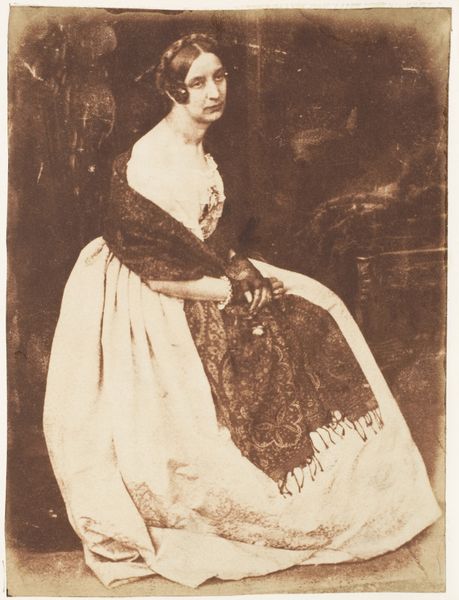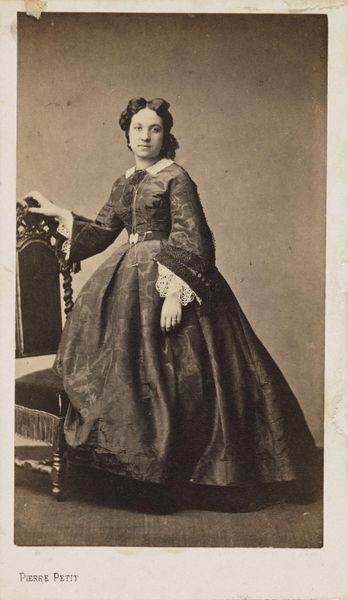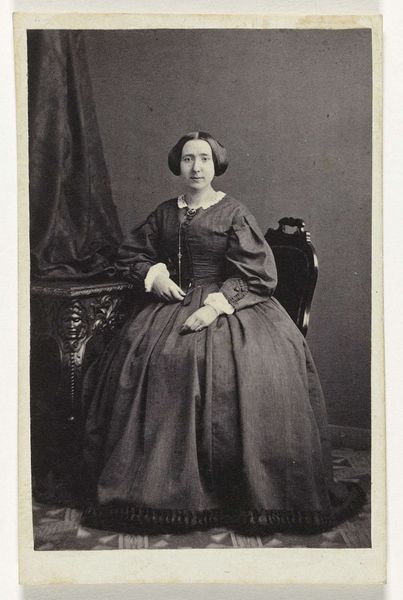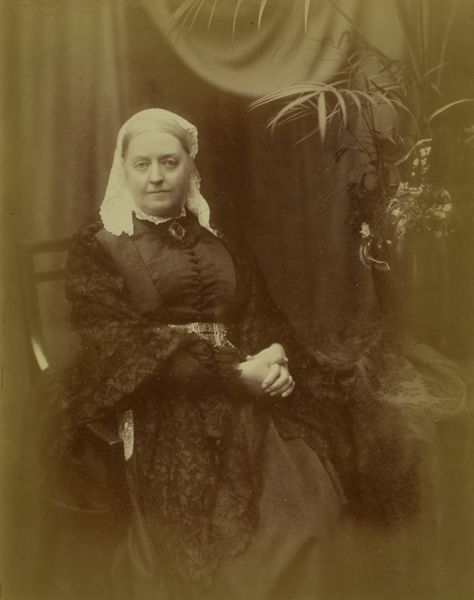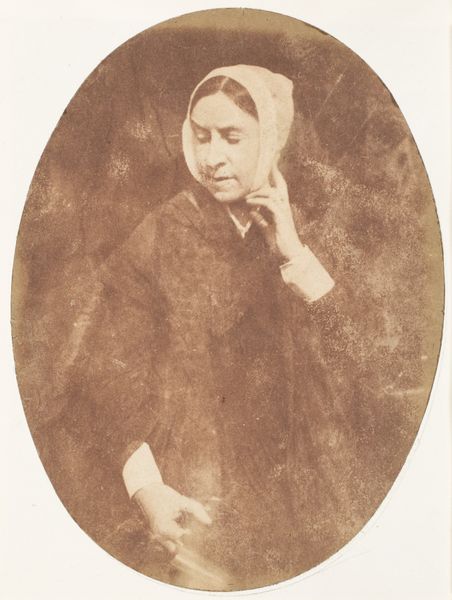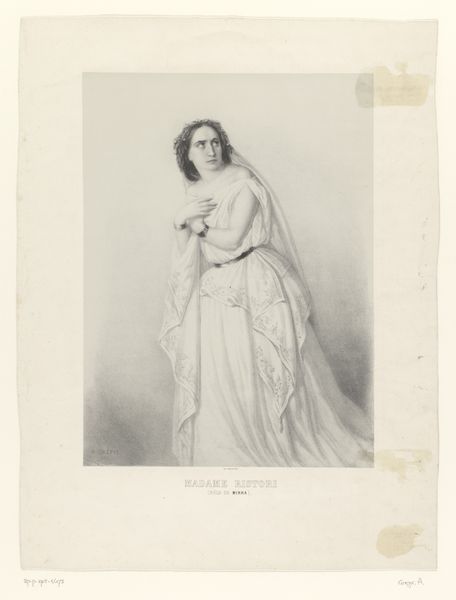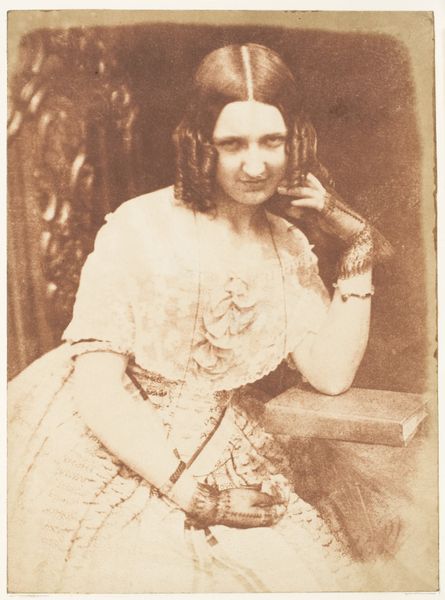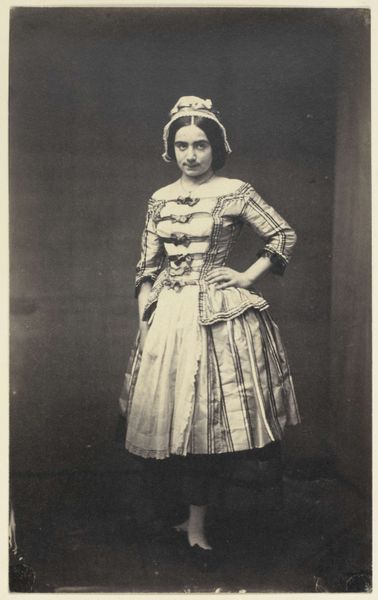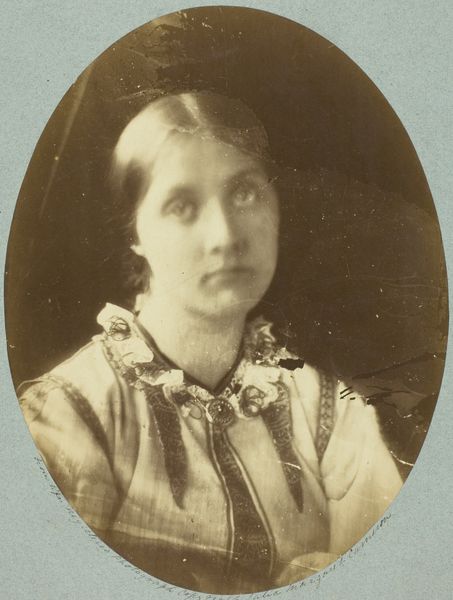
Dimensions: height 134 mm, width 113 mm
Copyright: Rijks Museum: Open Domain
Editor: This is Roger Fenton's "Portrait of an Unknown Woman with Ringlets," taken sometime between 1855 and 1865, using a gelatin-silver print. She seems so somber, almost melancholic. How do you interpret this work? Curator: The somberness you note is striking. Think about the limited agency afforded to women during this era. This controlled pose, her reserved expression—could they be subtle commentaries on the restrictions placed upon women's self-expression? The 'unknown woman' aspect adds another layer. Who was she, and what was her story? Editor: So, you're suggesting that the image might be subtly pushing against the social norms of the time? Curator: Precisely. While appearing conventional on the surface, portraiture also provided a rare opportunity for women to be seen, to exist in the visual record. How might this act of visibility challenge patriarchal structures? Think about how photography itself was a new technology, disrupting traditional power dynamics in representation. Editor: That's a really interesting point. It’s like, even in the act of being portrayed within certain constraints, there’s still a potential for subversion, however small. The details—the ringlets, the dress—while beautiful, almost become symbols of constraint. Curator: Yes! Consider the romantic style - this era often idealized women but within very specific boundaries. And her gaze, it's direct but also seems to hold a certain weariness. It asks us to look closer and consider the untold narratives of 19th-century women. Editor: This makes me think about how much we project our own contemporary understanding of gender and identity onto historical figures. Thanks! It's fascinating to view it as more than just a pretty portrait, but a possible social commentary. Curator: Exactly! It's a reminder that art is always in conversation with its context. Thinking about the role of the artist and his gaze is essential here. I find myself contemplating the intersectional layers present— gender, class, the rise of photography as a disruptive medium. It adds incredible depth to our viewing.
Comments
No comments
Be the first to comment and join the conversation on the ultimate creative platform.
